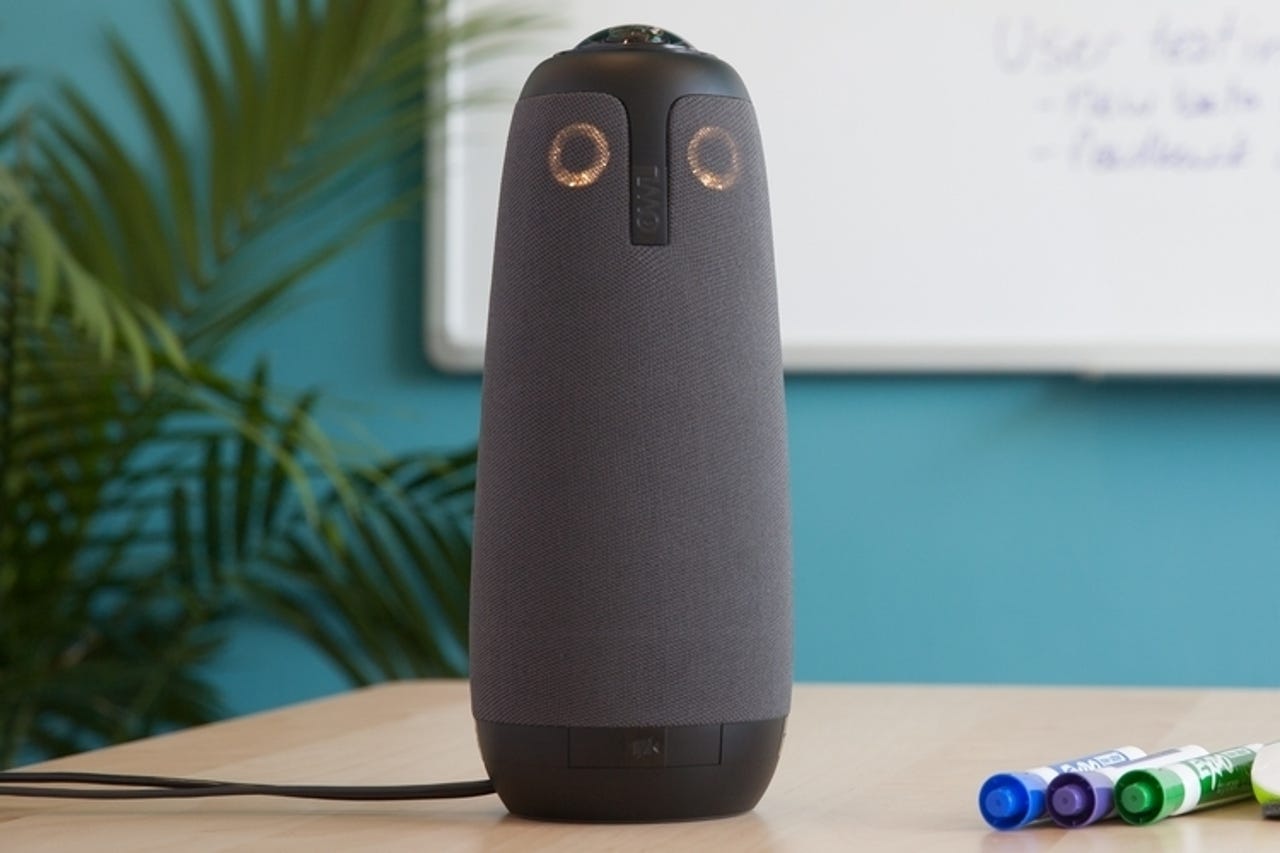Video conferencing technology for distributed workers is getting better


Image: OWL Labs
Among the possible outcomes of the federal tax overhaul, one that's been floated is a rise in the number of independent workers.
However you feel about that, it's a good time to be in the business of making technology for a distributed workforce. Owl Labs, a startup that makes a smart camera system for conference rooms, is trying to capitalize on the trend with a sleek tabletop device that's meant to appeal to people usually left out of corporate purchasing decisions: the remote worker.
After positive early reviews, Owl Labs just announced it's expanding distribution into Canada.
The Meeting Owl is a 360° video conferencing camera that automatically focuses on the people speaking in the room. Eleven-inches tall, it uses an eight microphone array to pick up sound and lock in on the person speaking. Remote viewers on the other end get a panoramic view of all the meeting attendants and a close-up view of the current speaker.
The result, the company says, is an immersive meeting experience for remote participants that feels more like being in the room. You can see a demo here.
Video conferencing is obviously becoming more important in business. The global video conferencing market, which is dominated by Cisco Systems, is expected to be worth US$8,958.7 million by 2025.
But the technology is still utilitarian, and user experience for remote participants, of which I'm often one, can seem like an afterthought. I've participated in a lot of video conferences where the sound is virtually inaudible, video lags, and the camera angle cuts off speakers. It can be difficult to interject with a request to tilt a camera when the rest of the group is in the middle of a productive discussion.
Dr. Albert Mehrabian, author of Silent Messages, a book on implicit communication, conducted research suggesting that as much as 55 percent of communication occurs nonverbally, such as through facial expressions and gestures. That's a lot of meaning to leave on the table by mounting a conference room camera to a far wall.
The Meeting Owl strikes me as a good solution, a nice balance between more expensive telepresence robots, which embody participants in a room via a robotic avatar, and the dreaded webcam. At $799, it's a realistic investment for many companies with distributed workforces.
In a market dominated by Cisco, it's also nice to see a hardware startup with a focus on end users find some early success.